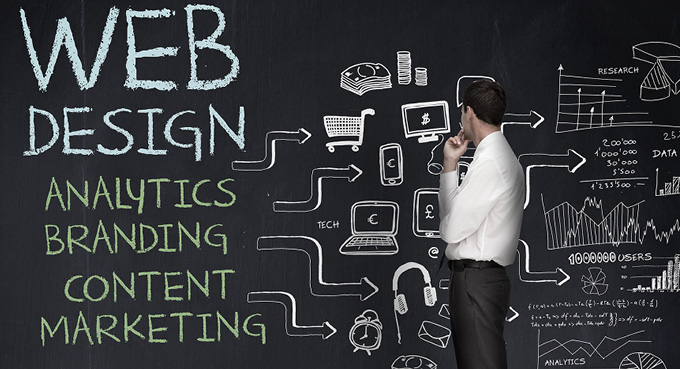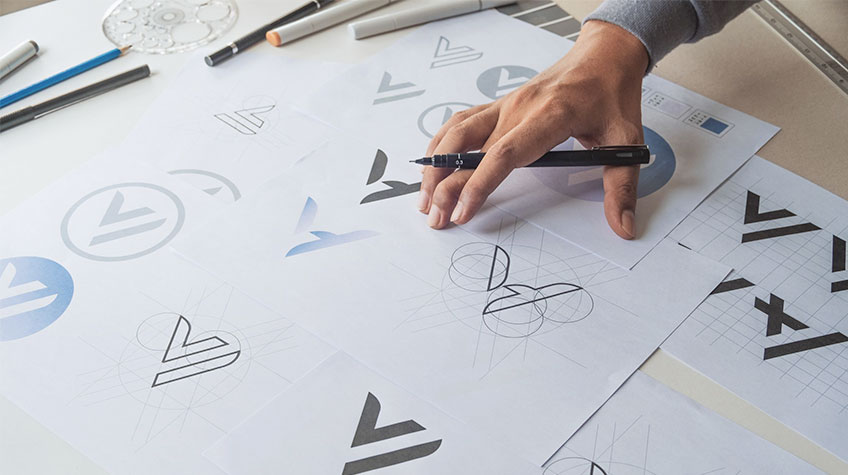Retro Logos
It’s official: Computers can drive you round the bend. That may not be news to you, but academic studies have now given the condition a name – Computer Stress Syndrome.
So if you are thinking of building your own website, you will not only need to factor in the number of hours it will take to learn the necessary skills, build the site, establish your presence on the web and deal with ongoing maintenance, but also the cost in terms of aggravation and grey hairs. For anyone deciding to go-it-alone, here’s a top tip: Snap a couple of ‘before’ and ‘after’ selfies to document the toll it has taken.
DIY website builders
But aren’t there all those website builder sites available that do practically all the work for you? Type ‘build a website’ into a search engine and you will uncover a bounty of DIY web design tools. With zappy names like Wix, GoDaddy and Moonfruit, they promise to be free, fast and foolproof, with claims such as ‘create your website in minutes’ and ‘no tech skills required’. For some projects these design tools might be just the ticket. Sites such as WordPress and Weebly are a godsend for bloggers with a tale to tell or an idea to sell, but if your website is an essential component of your business plan, going down the DIY route could turn out to be a costly mistake.
Getting down to Basics
What do you want from your website? This is the crucial question you need to ask yourself before taking a single step. Look around at different websites on the internet to get an idea of the kind of designs available. What works for you? Do you need your site to provide creative content and visual appeal? Or perhaps you are more concerned about basic functionality such as ease of navigation or smooth and secure financial transactions. Make a list of the elements you need to design into your website – building them into the foundations will be a lot easier than unravelling the whole thing to make changes along the line.
Ultimately this will be YOUR website, so whether you build the site yourself or invest in a designer, you will need to consider the branding, functionality and aesthetics of your site – right from the start.
How a professional can help
A professional designer will work alongside you to incorporate your vision and ideas whilst providing expertise and knowledge to make your website the workhorse of your business. The multitude of technical issues such as flexible layout and automatic scalability will be taken care of. This will ensure that your website will look good on any screen and your customers will find it easy to use whether they are on a mobile phone or a king-size monitor. Your website will stand out from the crowd with your own unique branding to put you ahead of the competition, and your designer will make sure your site is search engine friendly so that you are easy to find. And that is just for starters.
But whether you decide to go pro or DIY, please don’t end up like this poor guy – it simply isn’t worth it.
Logo Design Trends in 2023
Logo Design Trends in 2023
As we approach the year 2023, the world of logo design is evolving at a rapid pace. Companies are looking for innovative ways to stand out from the competition and connect with their target audiences. In this blog, we'll look at some of the logo design trends that are likely to shape the industry in 2023.
Minimalism has been a popular trend in logo design for several years now, and it is likely to continue in 2023. Simple and clean designs are effective at catching the viewer's eye and conveying a message without overcomplicating things. With more and more companies looking to simplify their brand messaging, we can expect to see a lot of minimalistic logos in the years to come.
Gradients are another trend that has been gaining popularity in recent years, and this is likely to continue in 2023. Gradients can add depth and dimension to a logo, and they can create a sense of movement or energy. With advancements in digital design tools, we can expect to see more complex and intricate gradients in logos in the future.
Bold Typography is a trend that has been growing in popularity in recent years, and it is likely to continue in 2023. Bold fonts can add a sense of strength and confidence to a logo, and they can create a sense of hierarchy or importance. We can expect to see more logos that use bold typography as the main focus of the design.
Hand-Drawn Logos are a trend that has been gaining popularity in recent years, and this is likely to continue in 2023. Hand-drawn logos can add a sense of authenticity and uniqueness to a brand, and they can help to convey a sense of personality or style. With the rise of digital design tools that make it easier to create hand-drawn logos, we can expect to see more of these types of logos in the future.
Negative Space is a design technique that has been used for many years, but it is likely to become more prevalent in 2023. Negative space can create hidden meanings or symbols within a logo, and it can be used to create a sense of depth or dimension. With more and more companies looking for unique and creative ways to stand out from the competition, we can expect to see more logos that use negative space in creative and innovative ways.
Geometric Shapes are a trend that has been growing in popularity in recent years, and it is likely to continue in 2023. Geometric shapes can create a sense of order and structure within a logo, and they can be used to create a sense of balance or symmetry. With advancements in digital design tools, we can expect to see more complex and intricate geometric shapes in logos in the future.
In conclusion, logo design trends in 2023 are likely to be focused on minimalism, gradients, bold typography, hand-drawn logos, negative space, and geometric shapes. Companies are looking for innovative ways to stand out from the competition and connect with their target audiences, and these trends offer a variety of creative and effective solutions. As we look to the future of logo design, we can expect to see more exciting and innovative designs that push the boundaries of what is possible.

